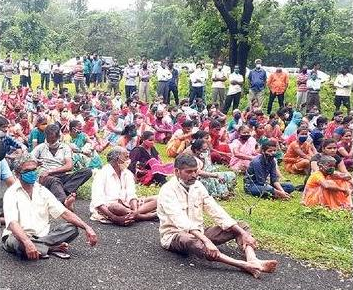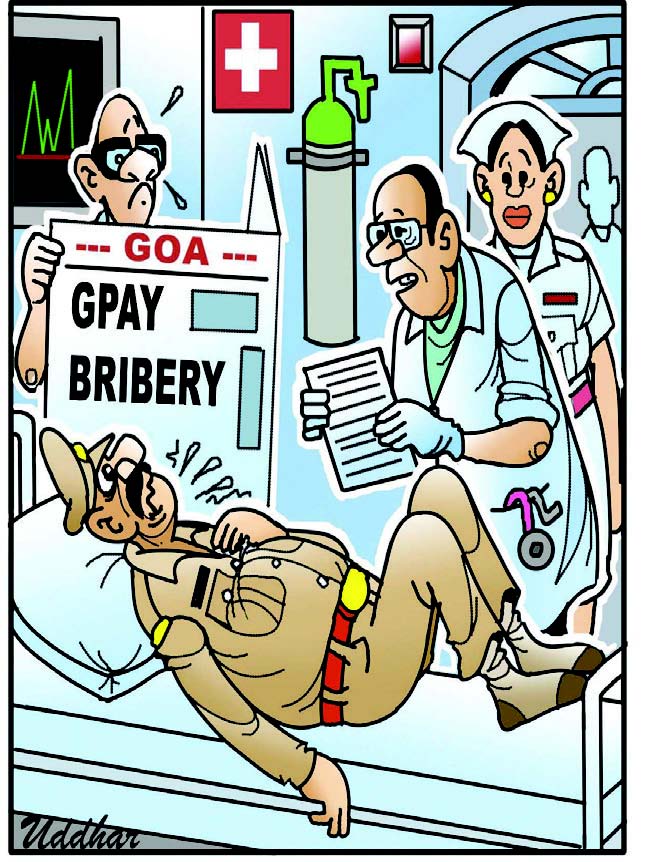
Blaise Costabir
If we look around, many of us live or use areas taken from mother nature. Residential/commercial spaces have come up on fields, khazan lands, the list can go on. As we get older and hopefully wiser, world over there is a trend to safeguard natural resources.
The Government has enacted many laws to protect the environment. This is because there is a need to have regulation and order. The major laws related to the environment and wildlife protection: The Environment (Protection) Act, 1986; prompted by the Bhopal gas leak of 1984. The Forest (Conservation) Act, 1980; the Wildlife Protection Act, 1972; Water (Prevention and Control of Pollution) Act, 1974; Air (Prevention and Control of Pollution) Act, 1981 and The Indian Forest Act, 1927. India, signed “The Stockholm Deceleration on Environment” in 1972.
The, Constitution of India, under Part IV (Article 48 A- Directive Principles of State Policies) stipulates that the State shall try to improve and protect the environment and safeguard forests and wildlife of the country. This would mean that every Indian atleast is charged with doing his best to protect the environment.
The Ministry of Environment and Forests (MoEF) was established in 1985, today it is the apex administrative body for regulating and ensuring environmental protection. Under this law, every development project is supposed to do an Environment Impact Assessment (EIA 2006) to get a clearance.
Ideally with all this, it is the Government who should be at the forefront of environment protection, unfortunately it appears to be the other way around and citizens are only expressing their constitutional duty.
Goa is currently undergoing a development overdrive. On the heels of an eight-lane north south road that is underway. There is the double tracking at Cansaulim, the three projects in the protected Mollem forests, there is an IIT on the cards. Each of these promises development for Goa and Goans. Each of these is facing strong opposition that is growing day by day. The question that begs an answer is, if it is for the benefit of Goa and Goans why is it being opposed? In the case of the opposition for Mollem, it is coming from a surprising quarter, youth.
The Environment Minister, Cabral, is on record and one must commend him for facing the public at every request. He says categorically that those opposing the projects should give their reasons for opposition. He has released a promised white paper but that does not talk about alternative sites considered, solar augmentation and theft. There is no focus on distribution which is the key as there is no shortage of power available. Project details and rational have to come from the Governments side, upfront not after a backlash.
Lets talk about Mollem. The three projects were proposed and cleared by video conferencing during the lockdown or so say the opponents. Was, the EIA done, if yes it should be made public and the numbers would speak. If it is power, then what is the current requirement and what is the future expectation that is going to be met by the project, was solar argumentation which is a national policy considered, was any alternative site less damaging to the flaura and fauna considered? The impression given, is only trees under the towers will be cut but when one goes to the project site a vast areas is cleared already, there are no sign boards, the truck carrying Punjabi workers is registered in Madhya Pradesh. Right off the bat, there is no benefit for Goans, so many trucks idle? Do we need Punjabis to do a survey? Were the trees felled following due process? What is the hurry, in COVID times? When trees are cut, twice the number have to be planted and these are being planted in neighbouring Karnataka, apparently there is no place in Goa for planting trees. Surely, someone has to relook this aspect.
The same questions are applicable to the road and rail projects, is the destruction of so much forest area or peoples ancestral homes, worth the trouble, how many cars and passengers will benefit with road widening and double tracking.
The issue seems to be TRUST DEFICIT. The people believe that all these projects are being done with one sole purpose and that is coal transportation. It is also true that MPT is pushing to expand it’s coal handling capacity as it sees it as the only means of revenue for the port. MPT has seemingly decided that a cruise terminal is not a profitable venture, does that sound right? Surely one cannot develop a cruise terminal with a coal handling facility. Goa is a tourist destination, surely not because it has fast trains and faster roads and huge coal handling.
So the key for the government is to lay it’s cards on the table and specify how Goa and Goans will benefit from these projects in the long run. Giving information that is correct and verified will play a vital role. Above all the Government will have to clearly state and convince one and all that these projects are not designed to benefit the coal importers.
It would be nice if the Government heeded the cries of the people and addressed their concerns, rather than wishing them away as NAY sayers. This frank dialogue between the Government and the people, where the details are placed on the table transparently and at one time and after which the best course is chosen will go a long way in removing the trust deficit and developing Goa, while protecting her environment as much as possible, because Goa is environment. Without that there is no Goa. Long live Goa.
(The author prefers to write rather than chat in a balcao)
